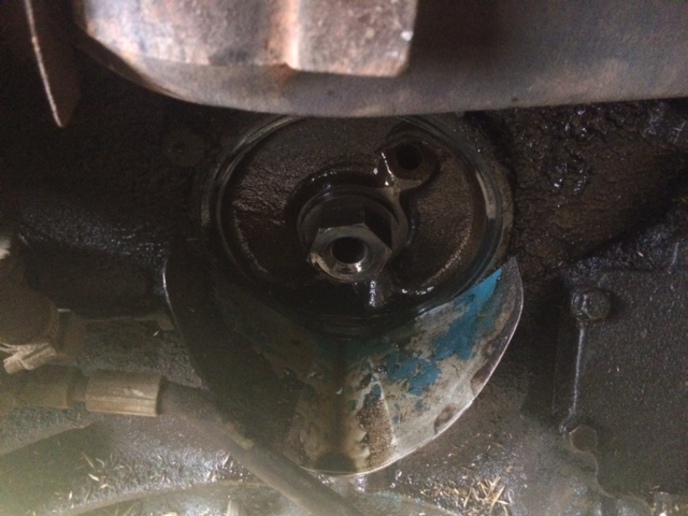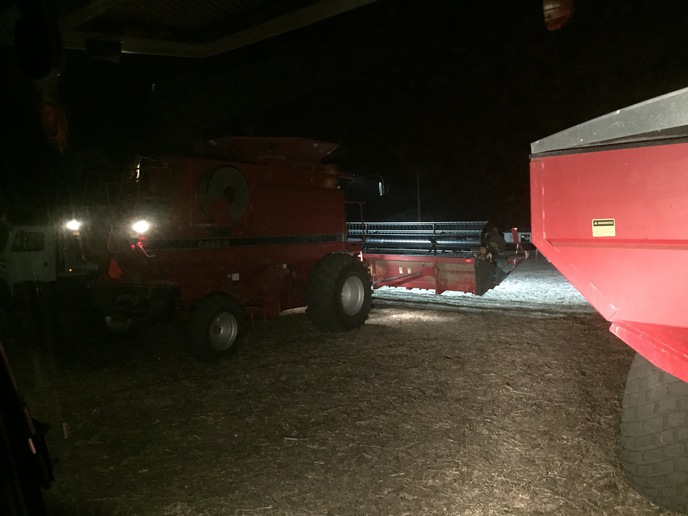So I've got an old hay wagon I'm rebuilding the deck on this winter and probably going to find a few more as we go forward.
As you can see from my pic, there are a fair number of bales to pick-up in that field and walking and trailering is a chore as we knew going into it. Another thing that crosses my mind when I look at that pic is - I should think there are enough bales spitting out of my NH68 to keep one man busy on the hay rack if one is pulled behind the baler.
Assuming 12 strokes/flakes per bale - my NH68 is a 63-65 stroke per minute baler if at 540 PTO, but I run around 430 PTO - about 80% (else it sounds like it's going to fly apart). This get me to about 50 strokes per minute and just less than 4 bales per minute with a constant feed. If I allow for 25% of my time in turns and other time out of the windrow or off the tractor, I'm just under 3 bales per minute or 180ish bales per hour.
Though my strokes/flakes per bale was all over the place when baling last summer, my point is - for the poor guy on the hay rack, a low capacity baler like my NH68 probably makes for a reasonable pace. The bottle neck is probably the baler capacity/output - not the guy stacking.
If I'm dropping the bales on the ground, sending them into an accumulator or kicking into a wagon, I'm thinking I want the highest capacity/output I can get/afford.
You folks with higher capacity balers - pulling a hay rack behind, what is your limit on sending bales out the back of the baler when pulling a hay wagon? Do you find yourself putting to many bales on the wagon for the guy back there and find it necessary to slow down or can they keep up all day long no matter the output?
Just curious.
BTW - more daylight every day going forward now - can Spring be far away?
Thanks & Merry Christmas!
Bill

As you can see from my pic, there are a fair number of bales to pick-up in that field and walking and trailering is a chore as we knew going into it. Another thing that crosses my mind when I look at that pic is - I should think there are enough bales spitting out of my NH68 to keep one man busy on the hay rack if one is pulled behind the baler.
Assuming 12 strokes/flakes per bale - my NH68 is a 63-65 stroke per minute baler if at 540 PTO, but I run around 430 PTO - about 80% (else it sounds like it's going to fly apart). This get me to about 50 strokes per minute and just less than 4 bales per minute with a constant feed. If I allow for 25% of my time in turns and other time out of the windrow or off the tractor, I'm just under 3 bales per minute or 180ish bales per hour.
Though my strokes/flakes per bale was all over the place when baling last summer, my point is - for the poor guy on the hay rack, a low capacity baler like my NH68 probably makes for a reasonable pace. The bottle neck is probably the baler capacity/output - not the guy stacking.
If I'm dropping the bales on the ground, sending them into an accumulator or kicking into a wagon, I'm thinking I want the highest capacity/output I can get/afford.
You folks with higher capacity balers - pulling a hay rack behind, what is your limit on sending bales out the back of the baler when pulling a hay wagon? Do you find yourself putting to many bales on the wagon for the guy back there and find it necessary to slow down or can they keep up all day long no matter the output?
Just curious.
BTW - more daylight every day going forward now - can Spring be far away?
Thanks & Merry Christmas!
Bill



